Olivier Morin
@oliviermorin.bsky.social
Researcher at Ecole Normale Supérieure / CNRS in Paris. Culture, cognition, things in between. https://linktr.ee/oliviermorin
Letter shapes don't use features in this informative way. Features like symmetry/no symmetry, curves/no curves, etc. are used haphazardly; they lack the nice symmetry of speech sounds. (13/14)

February 19, 2025 at 3:56 PM
Letter shapes don't use features in this informative way. Features like symmetry/no symmetry, curves/no curves, etc. are used haphazardly; they lack the nice symmetry of speech sounds. (13/14)
So, are letter shapes as combinatorial as phonemes? No! Languages can create dozens of phonemes from combining just a handful of features. Writing systems generally can't: they need more phonemes per features. (10/14)
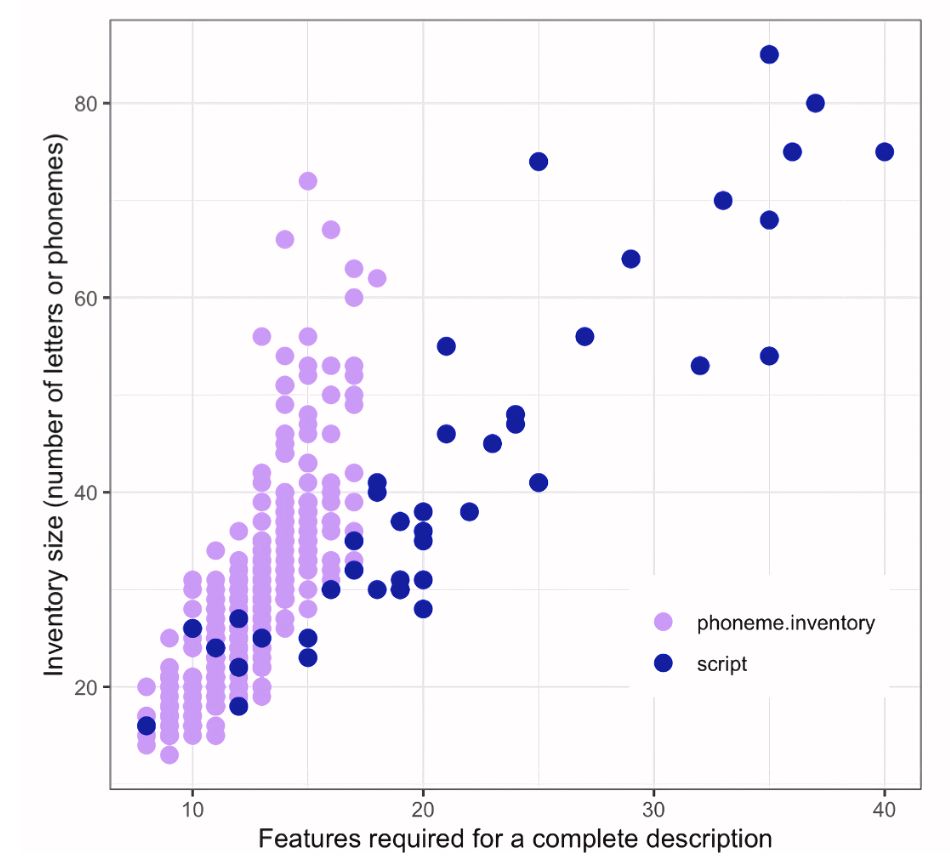
February 19, 2025 at 3:56 PM
So, are letter shapes as combinatorial as phonemes? No! Languages can create dozens of phonemes from combining just a handful of features. Writing systems generally can't: they need more phonemes per features. (10/14)
We analyzed Glyph data to extract the visual features that best describe most letters. We now have a complete visual classification of many diverse writing systems—a first! (9/14)

February 19, 2025 at 3:56 PM
We analyzed Glyph data to extract the visual features that best describe most letters. We now have a complete visual classification of many diverse writing systems—a first! (9/14)
Players could play with any of 43 writing systems from all over the world. The goal of the game was to find many ways one could sort the letters of an alphabet into two groups, according to criteria that made sense and could be replicated. (8/14)
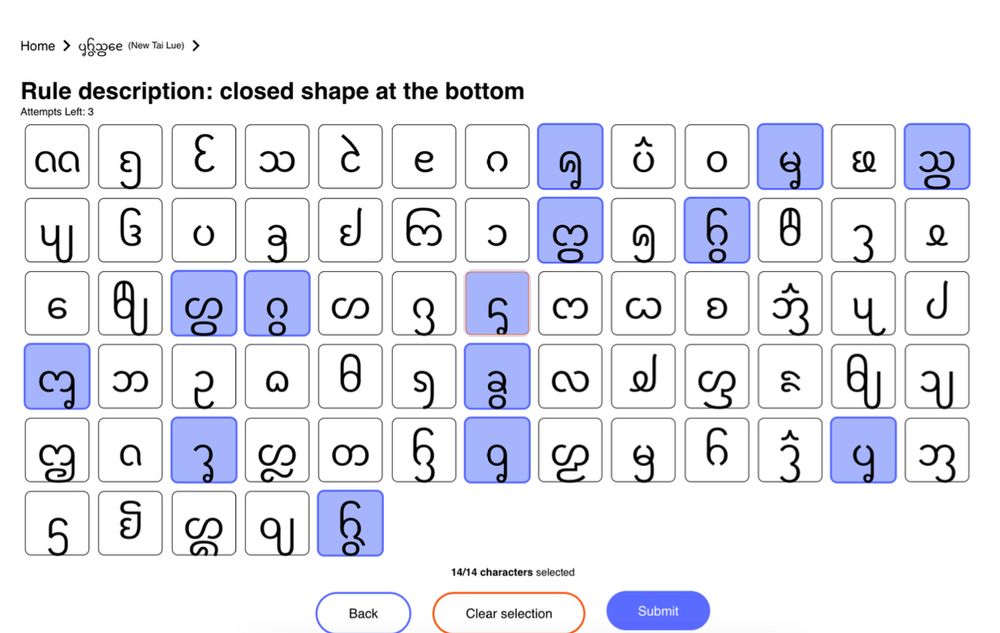
February 19, 2025 at 3:56 PM
Players could play with any of 43 writing systems from all over the world. The goal of the game was to find many ways one could sort the letters of an alphabet into two groups, according to criteria that made sense and could be replicated. (8/14)
So we decide to crowdsource this! Enter Glyph (2022–2024), a gaming applet that we built. 5,000+ people played with Glyph for free and for fun, contributing the data for this study. BIG thanks to them! (7/14)
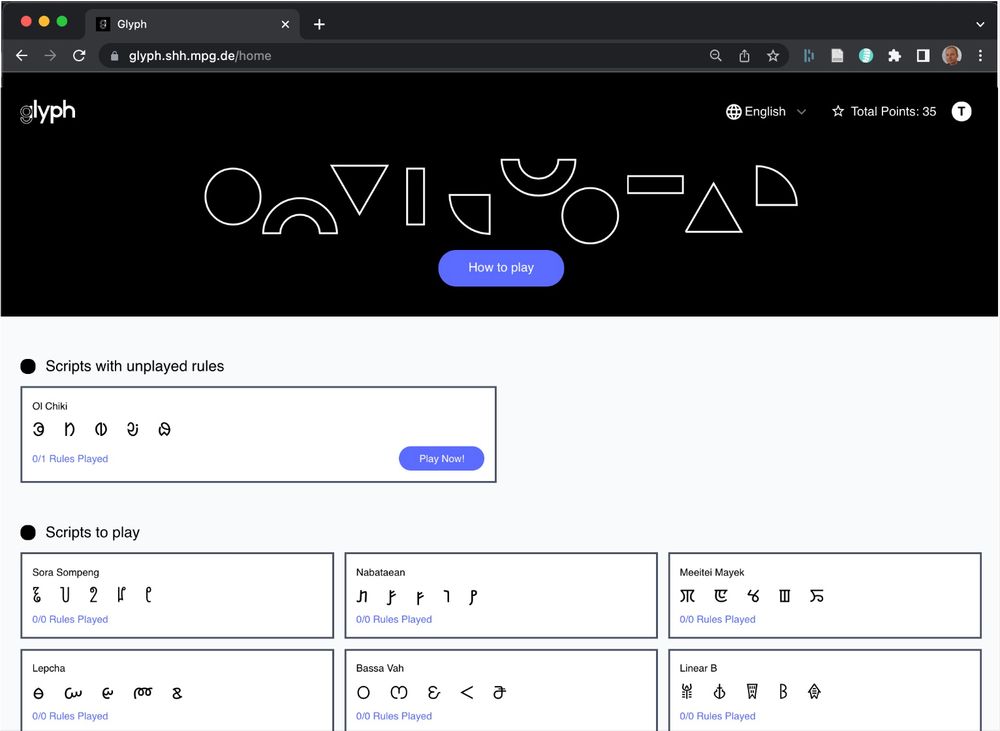
February 19, 2025 at 3:56 PM
So we decide to crowdsource this! Enter Glyph (2022–2024), a gaming applet that we built. 5,000+ people played with Glyph for free and for fun, contributing the data for this study. BIG thanks to them! (7/14)
Is language combinatorial in this sense? Everyone pretty much agrees that it is. Especially phonemes — the sounds of languages. They are combinations of features (like open/close, front/back, nasalized/not nasalized etc.) (4/14)
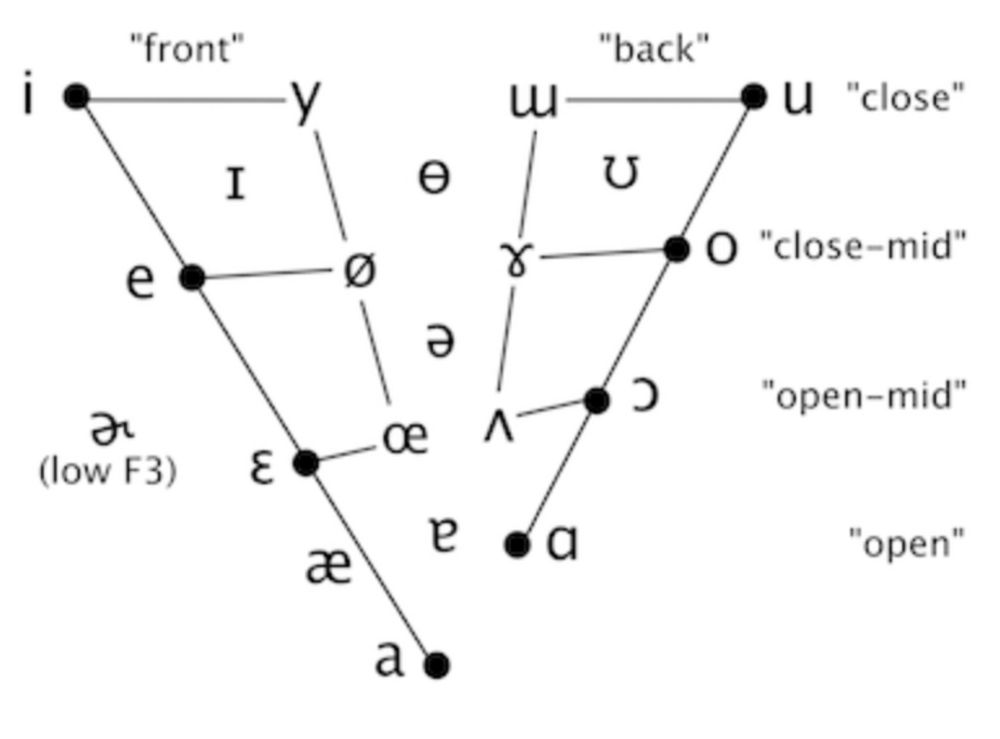
February 19, 2025 at 3:56 PM
Is language combinatorial in this sense? Everyone pretty much agrees that it is. Especially phonemes — the sounds of languages. They are combinations of features (like open/close, front/back, nasalized/not nasalized etc.) (4/14)
One solution: Combinatoriality. Symbols are combinatorial when each re-use features present in other symbols, to form different combinations—as in this Sol LeWitt painting: (3/14)
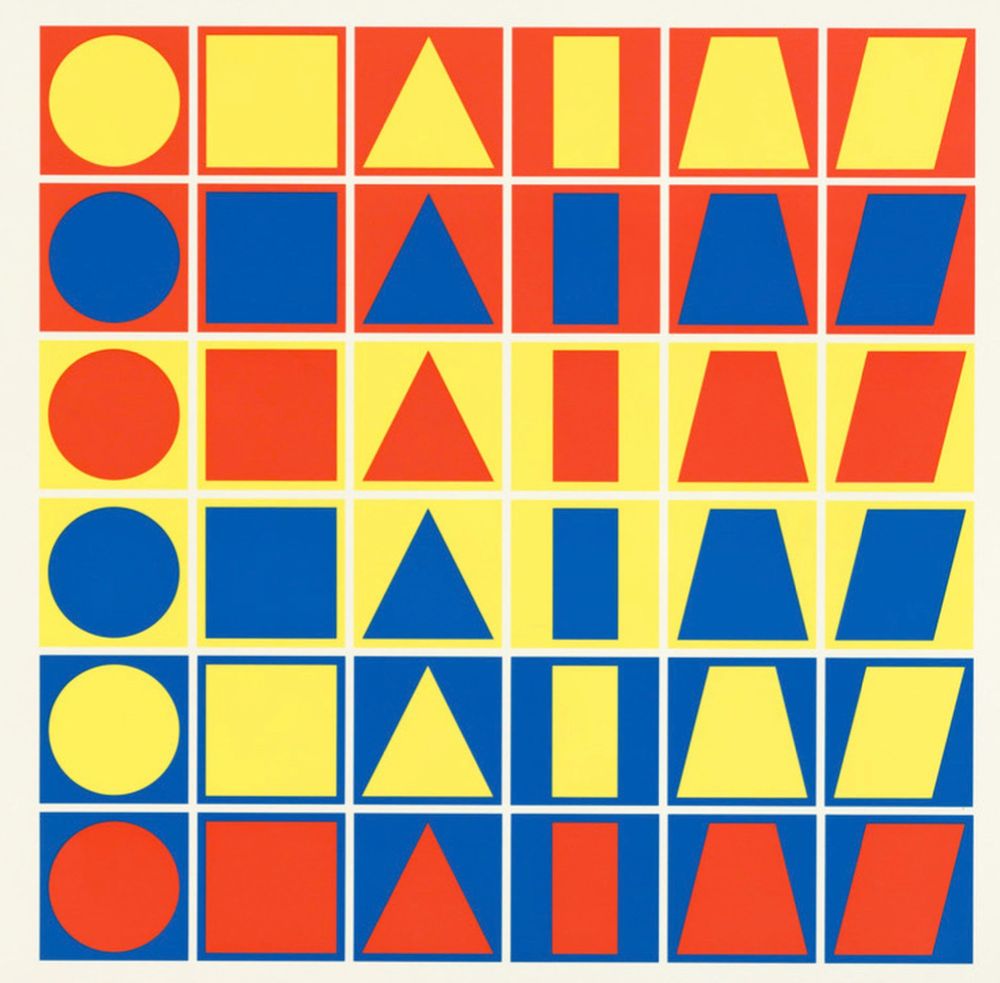
February 19, 2025 at 3:56 PM
One solution: Combinatoriality. Symbols are combinatorial when each re-use features present in other symbols, to form different combinations—as in this Sol LeWitt painting: (3/14)
🚨 New paper! 🚨 by Yoolim Kim, @helenamiton.bsky.social, Marc Allassonnière Tang, & myself, in Journal of Memory and Language. We tried to do for letter shapes what phonologists did for speech sounds. doi.org/10.1016/j.jm... A 🧵 (1/14)

February 19, 2025 at 3:56 PM
🚨 New paper! 🚨 by Yoolim Kim, @helenamiton.bsky.social, Marc Allassonnière Tang, & myself, in Journal of Memory and Language. We tried to do for letter shapes what phonologists did for speech sounds. doi.org/10.1016/j.jm... A 🧵 (1/14)

